Dr. Prateek Kumar Mishra and Dr. Anushri Tiwari*Department of Veterinary Pharmacology and *Department of Veterinary Pathology,College of Veterinary Science & A.H., NDVSU, Jabalpur (M.P.)
INTRODUCTION
Livestock are an essential part of Indian economy and share a significant contribution towards the Indian GDP. The country still holds a major population of small-scale farmers who depend on the animals for the draught purpose. Therefore, taking good care for proper nutrition and health of these animals become important. Also, being larger in size the animals can’t be taken to the vet care each time for casual treatment conditions. Lack of money and mode of transportation also act as barriers to provide spontaneous treatment to the animals. At this moment, comes the role of traditional medicine. Humans have always shared an inseparable connection with nature and received several benefits from mother nature. The traditional medicine has been tried and tested for several decades and almost provides no harmful effects to the animals which makes it even more trustworthy.The indigenous knowledge of the veterinary health care system acquired by traditional herbal healers and elderly learned farmers and is orally transformed from one generation to other. Traditional medicine (also known as indigenous or folk medicine) comprises medical aspects of traditional knowledge that developed over generations within various societies before the era of modern medicine. The World Health Organization (WHO) defines traditional medicine as “the sum total of the knowledge, skills, and practices based on the theories, beliefs, and experiences indigenous to different cultures, whether explicable or not, used in the maintenance of health as well as in the prevention, diagnosis, improvement or treatment of physical and mental illness”. Ethno-veterinary medicine, deal with traditional animal health care which encompasses the knowledge, skills, methods, practices and beliefs about animal health care and developed by farmers in fields and barns, rather than by scientists in laboratories and clinics. These medicines provide cheaper options than comparable western drugs and the products are locally available and more easily accessible. In the face of these and other factors, there is increasing interest in the field of ethno-veterinary research and development. Parts of herbal plant such as root, bulb, fruits, leaves, stem and rhizome are used for the treatment of various diseases of livestock.Some plants have been listed below which are used for animal care in our daily life.Acacia nilotica (Babool)-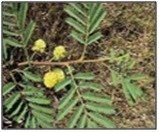 flower used for the treatment of jaundice.About 200g flower grinded well and mixed with 250 mL water, the solution so obtained is given orally twice daily for 15-20 days to animal to cure jaundice and bark is used for the treatment of dysentery. The extract of bark is given to animal orally twice a day for 10-20 days to cure dysentery.Allium cepa (Onion)-
flower used for the treatment of jaundice.About 200g flower grinded well and mixed with 250 mL water, the solution so obtained is given orally twice daily for 15-20 days to animal to cure jaundice and bark is used for the treatment of dysentery. The extract of bark is given to animal orally twice a day for 10-20 days to cure dysentery.Allium cepa (Onion)- bulb and leaf part used for the treatment of ectoparasitic infestation and bulb paste mixed with mustard oil and administered thrice daily for one month for the treatment of cough in animals.Tamarindusindica (Imli)-
bulb and leaf part used for the treatment of ectoparasitic infestation and bulb paste mixed with mustard oil and administered thrice daily for one month for the treatment of cough in animals.Tamarindusindica (Imli)- leaves used for treatment of swelling, the fresh leaves, about 400-500g, are boiled in water and these leaves are tie up on affected part of body to cure swelling till the complete relief.Asparagus racemosus (satavar, shatavari, shatamull orshatawari)-
leaves used for treatment of swelling, the fresh leaves, about 400-500g, are boiled in water and these leaves are tie up on affected part of body to cure swelling till the complete relief.Asparagus racemosus (satavar, shatavari, shatamull orshatawari)- a species of Asparagus common throughout India and the Himalayas. 500g root powder of plant given with milk for one month for the treatment of arthritis in cattle.Moringa oleifera(Munga)-
a species of Asparagus common throughout India and the Himalayas. 500g root powder of plant given with milk for one month for the treatment of arthritis in cattle.Moringa oleifera(Munga)-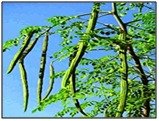 Common names include moringa,drumstick tree(from the long, slender, triangular seed-pods), horseradish tree (from the taste of the roots, which resembles horseradish) and ben oil tree or benzolive tree. A fast-growing, drought-resistant tree of the family Moringaceae, native to the Indian subcontinent. Paste of munga tree leaves (about 100-200 g) is given twice daily for three to five days to cattle for quick relief from diarrhea and dysentery. The pod paste is prepared from 450-500 g pods and given approximately for one month for relief from rheumatism. Thejuice of the roots is applied on the ulcers of cattle for healing and removal of larvae of insects from it.Ocimumtenuiflorum (synonym Ocimum sanctum)(Holy basil or Tulsi)-
Common names include moringa,drumstick tree(from the long, slender, triangular seed-pods), horseradish tree (from the taste of the roots, which resembles horseradish) and ben oil tree or benzolive tree. A fast-growing, drought-resistant tree of the family Moringaceae, native to the Indian subcontinent. Paste of munga tree leaves (about 100-200 g) is given twice daily for three to five days to cattle for quick relief from diarrhea and dysentery. The pod paste is prepared from 450-500 g pods and given approximately for one month for relief from rheumatism. Thejuice of the roots is applied on the ulcers of cattle for healing and removal of larvae of insects from it.Ocimumtenuiflorum (synonym Ocimum sanctum)(Holy basil or Tulsi)-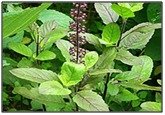 an aromatic perennial plant in the family Lamiaceae. The fresh leaf of Ocimum sanctum (350 g) is boiled in water (200-250ml) and the decoction so obtained is given to cure cough and cold.Bambusaarundinacea(Thorny bamboo or Bans)-
an aromatic perennial plant in the family Lamiaceae. The fresh leaf of Ocimum sanctum (350 g) is boiled in water (200-250ml) and the decoction so obtained is given to cure cough and cold.Bambusaarundinacea(Thorny bamboo or Bans)-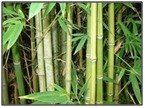 leaves of bamboo plant (100-200) gm are given to pregnant buffaloes for a month, twice a day daily to facilitate easier delivery and paste of leaves and rhizome part is used for treatment of diarrhoea in cattle.Azadirachtaindica(Neem or Nimtree or Indian lilac)-
leaves of bamboo plant (100-200) gm are given to pregnant buffaloes for a month, twice a day daily to facilitate easier delivery and paste of leaves and rhizome part is used for treatment of diarrhoea in cattle.Azadirachtaindica(Neem or Nimtree or Indian lilac)-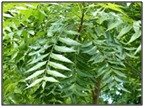 a tree in the mahogany family Meliaceae. It is one of two species in the genus Azadirachta and is native to the Indian subcontinent. Ground bark of the tree is mixed with water to make a paste which can be used for the healing of wound.Coriandrum sativum (Chinese parsley or Cilantro or Dhaniya)-
a tree in the mahogany family Meliaceae. It is one of two species in the genus Azadirachta and is native to the Indian subcontinent. Ground bark of the tree is mixed with water to make a paste which can be used for the healing of wound.Coriandrum sativum (Chinese parsley or Cilantro or Dhaniya)- an annual herb whose all parts are edible. The seed powder is mixed with leaves of Lawsoniainermis (henna) and paste is given twice a daily for 7 days to animal to cure loose motion.Mentha spicata(Spearmint or Garden mint or Pudina)-
an annual herb whose all parts are edible. The seed powder is mixed with leaves of Lawsoniainermis (henna) and paste is given twice a daily for 7 days to animal to cure loose motion.Mentha spicata(Spearmint or Garden mint or Pudina)-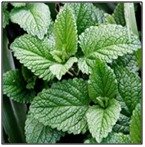 a species of flowering plant in the mint family Lamiaceae. It is native to the temperate regionsof Europe and western and central Asia, east to the Himalaya and eastern Siberia and North America. The paste is obtained from 250 g mint leaves and 200 g leaves of Centellaasiatica(gotukola) and given to cattle twice a day for 7 days to cure feverMangiferaindica (Mango or Aam)-
a species of flowering plant in the mint family Lamiaceae. It is native to the temperate regionsof Europe and western and central Asia, east to the Himalaya and eastern Siberia and North America. The paste is obtained from 250 g mint leaves and 200 g leaves of Centellaasiatica(gotukola) and given to cattle twice a day for 7 days to cure feverMangiferaindica (Mango or Aam)-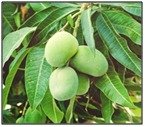 belonging tofamily Anacardiaceae, it is indigenous to Indian subcontinent and an important fruit crop cultivated in tropical and subtropical region. The fruit paste is obtained from 50 to 100 g fruit and given along with wheat bread once or twice daily for seven days to cattle in the case of indigestion.Oryza sativa(Rice or Chawal)-
belonging tofamily Anacardiaceae, it is indigenous to Indian subcontinent and an important fruit crop cultivated in tropical and subtropical region. The fruit paste is obtained from 50 to 100 g fruit and given along with wheat bread once or twice daily for seven days to cattle in the case of indigestion.Oryza sativa(Rice or Chawal)- used to enhance lactation for whichrice grains are cooked along with black gram, black salts and black pepper. The recipe so prepared is given once or twice in a day for one month to enhance lactation in cattle.Tribulus terrestris (Burra, Gokharu orBhakhdi)-
used to enhance lactation for whichrice grains are cooked along with black gram, black salts and black pepper. The recipe so prepared is given once or twice in a day for one month to enhance lactation in cattle.Tribulus terrestris (Burra, Gokharu orBhakhdi)-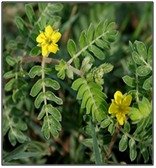 commonly known as goat’s-head, bindii, bullhead, caltrop, small caltrops, cat’s-head, devil’s eyelashes, devil’s-thorn, is an annual plant in the caltrop family (Zygophyllaceae) widely distributed. It acts as a noxious weed since its small woody fruit (the bur) having long, sharp and strong spines which easily penetrate surfaces such as bare feet or thin shoes. Juice of fresh leaves is given to animals in case of colic (abdominal pain) and chronic cough.Zingiber officinale (Ginger or Adrak)-
commonly known as goat’s-head, bindii, bullhead, caltrop, small caltrops, cat’s-head, devil’s eyelashes, devil’s-thorn, is an annual plant in the caltrop family (Zygophyllaceae) widely distributed. It acts as a noxious weed since its small woody fruit (the bur) having long, sharp and strong spines which easily penetrate surfaces such as bare feet or thin shoes. Juice of fresh leaves is given to animals in case of colic (abdominal pain) and chronic cough.Zingiber officinale (Ginger or Adrak)-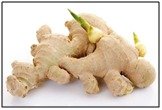 a flowering plant whose rhizome, ginger root or ginger, is widely used as a spice and a folk medicine. About 100 g fresh rhizome is boiled in half liter cow milk and given to physically disable animal twice a day for 15 days.Hibiscus rosa-sinensis(Chinese hibiscus, China rose, Hawaiian hibiscus, Rose mallow, Shoeblack plant or Gurhal)-
a flowering plant whose rhizome, ginger root or ginger, is widely used as a spice and a folk medicine. About 100 g fresh rhizome is boiled in half liter cow milk and given to physically disable animal twice a day for 15 days.Hibiscus rosa-sinensis(Chinese hibiscus, China rose, Hawaiian hibiscus, Rose mallow, Shoeblack plant or Gurhal)-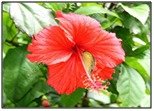 The bark of plant is used for treatment of twitching in animals.About 150-200 g of the bark is grinded well and given with one litre water twice daily till complete rest in case oftwitching.Holopteliaintegrifolia (Indian elm or Jungle cork tree or Chilbil or Kanju or Papri)-
The bark of plant is used for treatment of twitching in animals.About 150-200 g of the bark is grinded well and given with one litre water twice daily till complete rest in case oftwitching.Holopteliaintegrifolia (Indian elm or Jungle cork tree or Chilbil or Kanju or Papri)- used for removal of ecto-parasites for which the juice of leaves is applied on the skin for removal of ecto-parasites.Trigonellafoenum-graecum(Fenugreek or Methi)-
used for removal of ecto-parasites for which the juice of leaves is applied on the skin for removal of ecto-parasites.Trigonellafoenum-graecum(Fenugreek or Methi)- an annual plant in the family Fabaceae, with leaves consisting of three tiny obovate to oblong leaflets. It is cultivated worldwide as a semiarid crop. Its seeds and leaves are common ingredients in dishes from the Indian subcontinent. This plant seed used for easier delivery in animal. About 100 g sprouted seeds is given to pregnant animal once daily for one month for easier parturition (delivery). For twitching, about 25-30 g dried seed powder is given twice daily for 5 to 7 days to animal.Cynodondactylon(Bermuda grass or Dhoob or Dhurva grass or Dog’s tooth grass)-
an annual plant in the family Fabaceae, with leaves consisting of three tiny obovate to oblong leaflets. It is cultivated worldwide as a semiarid crop. Its seeds and leaves are common ingredients in dishes from the Indian subcontinent. This plant seed used for easier delivery in animal. About 100 g sprouted seeds is given to pregnant animal once daily for one month for easier parturition (delivery). For twitching, about 25-30 g dried seed powder is given twice daily for 5 to 7 days to animal.Cynodondactylon(Bermuda grass or Dhoob or Dhurva grass or Dog’s tooth grass)-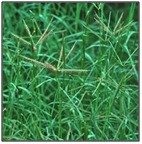 native to most of the eastern hemisphere. Dhoob grass used for increasing lactation and milk quality for this the aerial (0.3 kg per day) plant is given as fodder for increasing lactation and milk quality and for conjunctivitis one teaspoonful leaf juice is put in each eye in morning for three days for the treatment of conjunctivitis.Dalbergia sissoo(North Indian rosewood or Biradi or Sisau or Shisham)-
native to most of the eastern hemisphere. Dhoob grass used for increasing lactation and milk quality for this the aerial (0.3 kg per day) plant is given as fodder for increasing lactation and milk quality and for conjunctivitis one teaspoonful leaf juice is put in each eye in morning for three days for the treatment of conjunctivitis.Dalbergia sissoo(North Indian rosewood or Biradi or Sisau or Shisham)-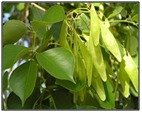 fast-growing, hardy deciduous rosewood tree native to the Indian Subcontinent. The leaf juice of sisau used to stop bleeding in animals. Juice of 100 g leaves is given twice or thrice in a day for one week to stop bleeding effectively.
fast-growing, hardy deciduous rosewood tree native to the Indian Subcontinent. The leaf juice of sisau used to stop bleeding in animals. Juice of 100 g leaves is given twice or thrice in a day for one week to stop bleeding effectively.


